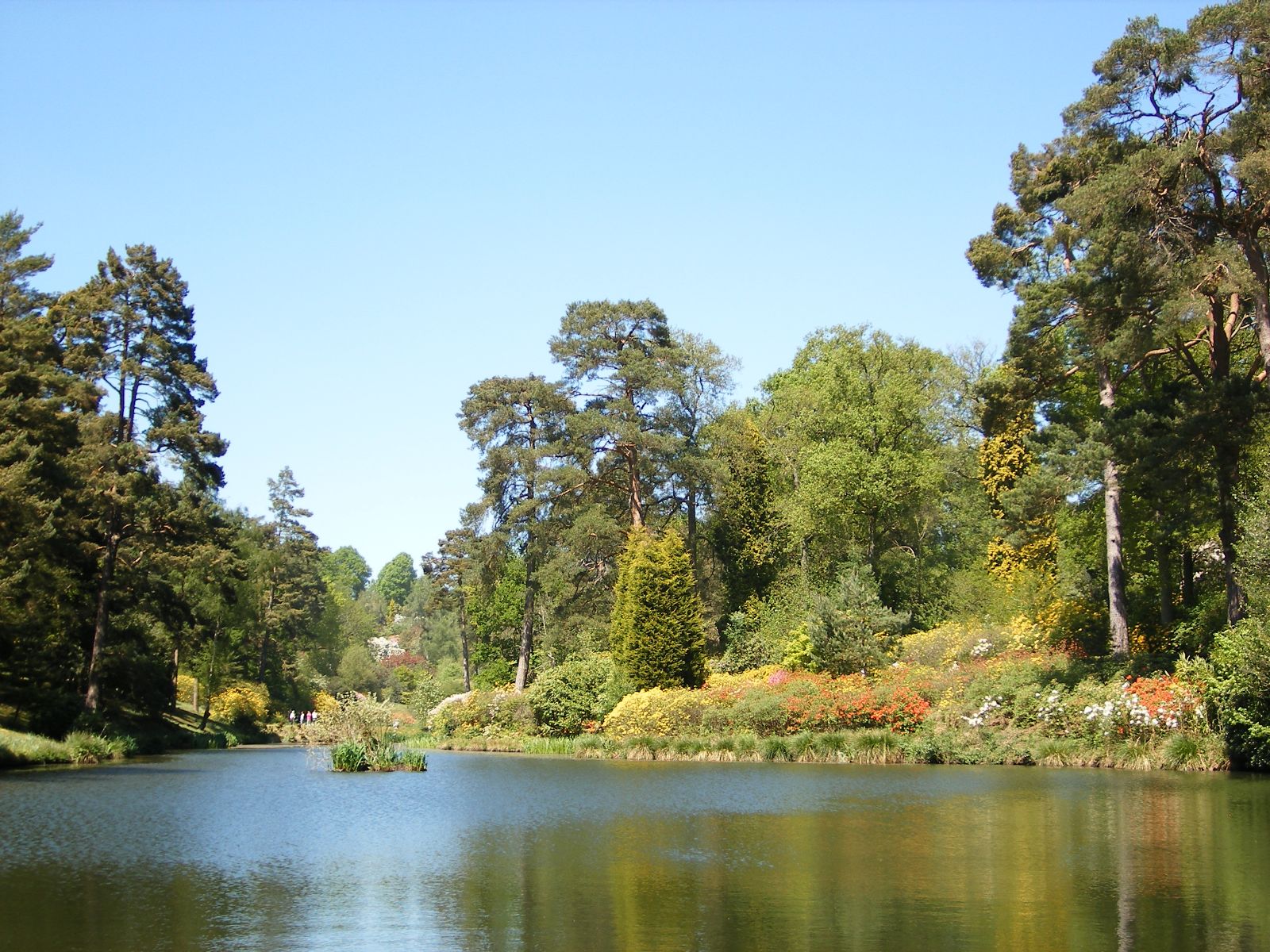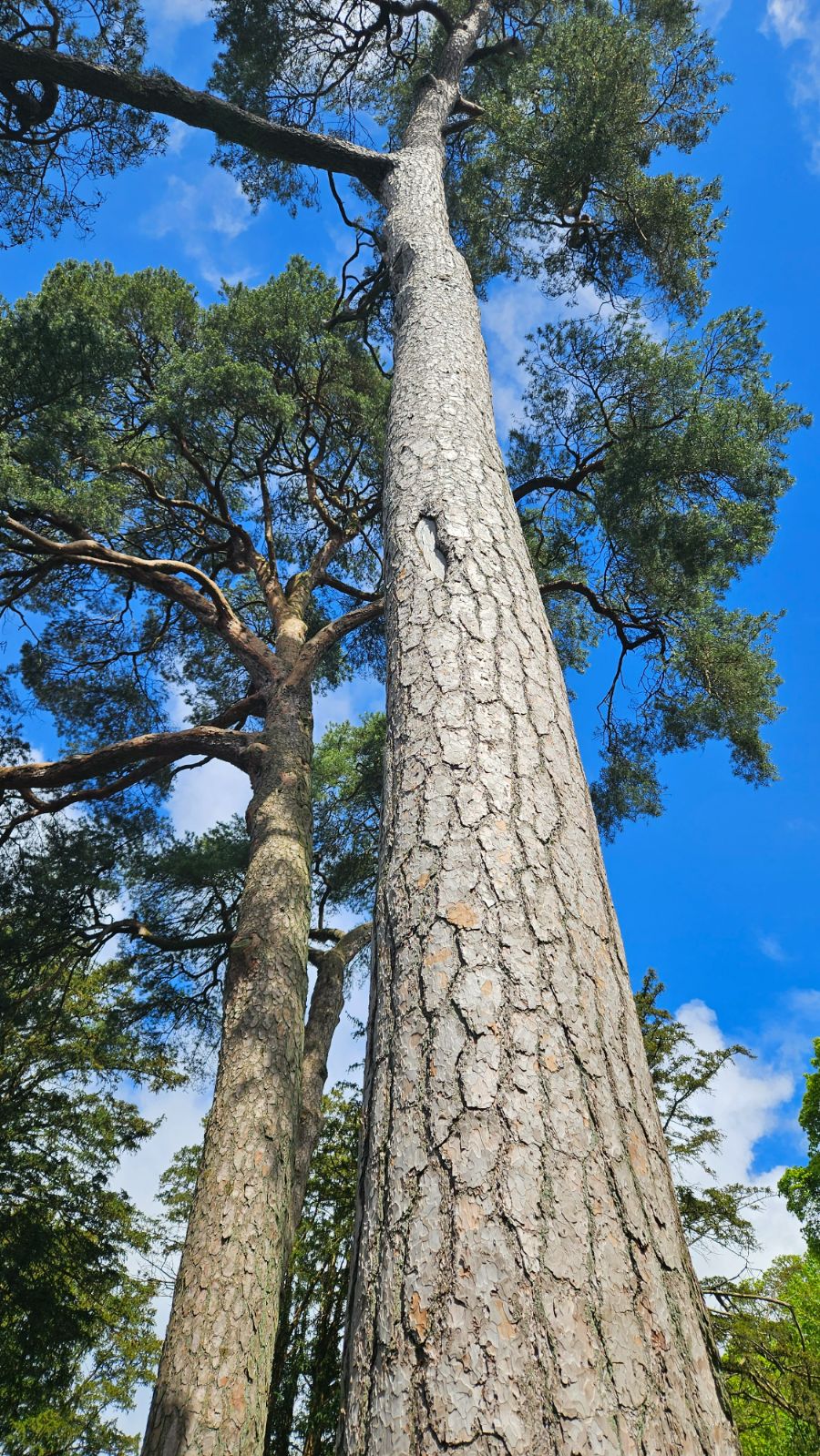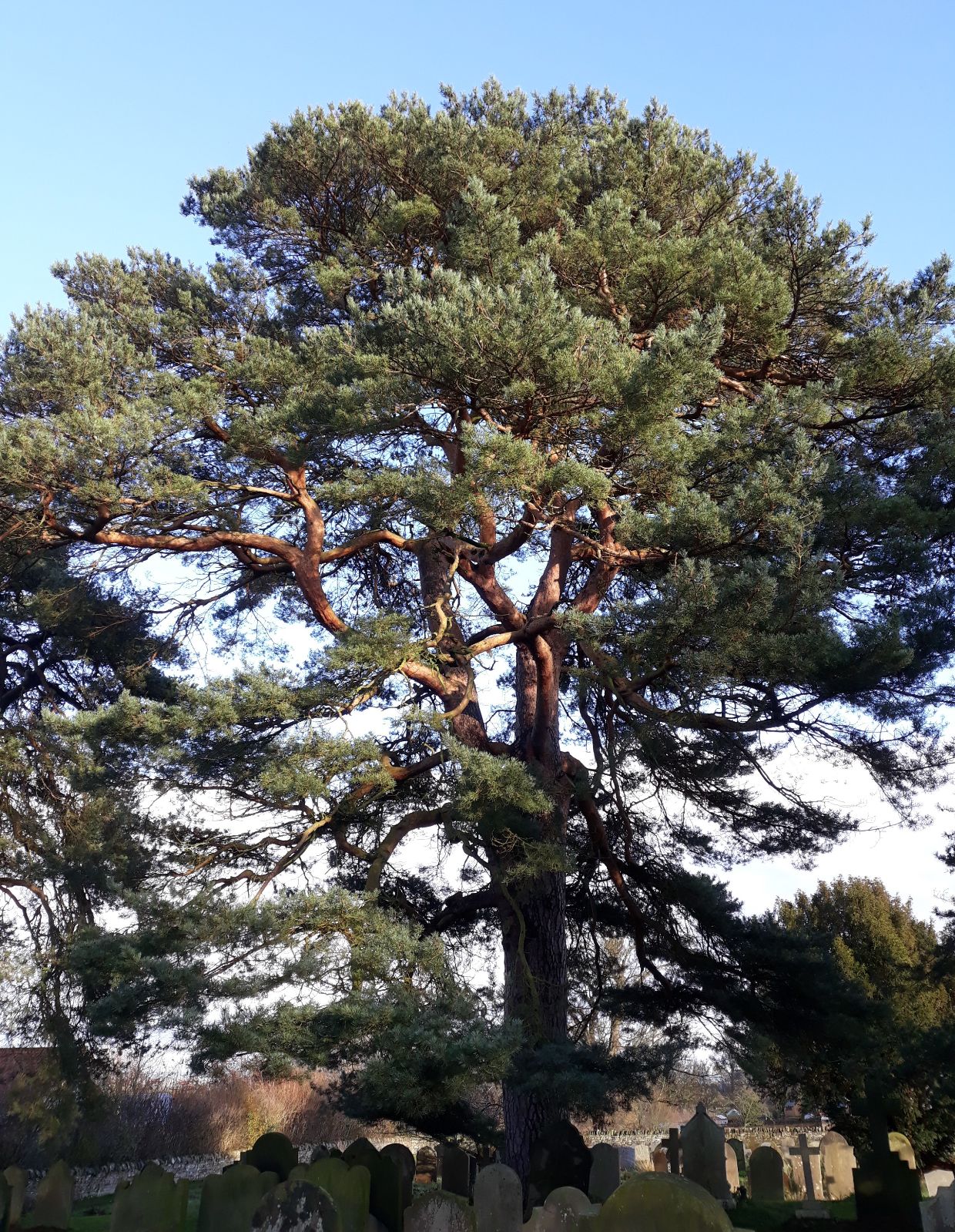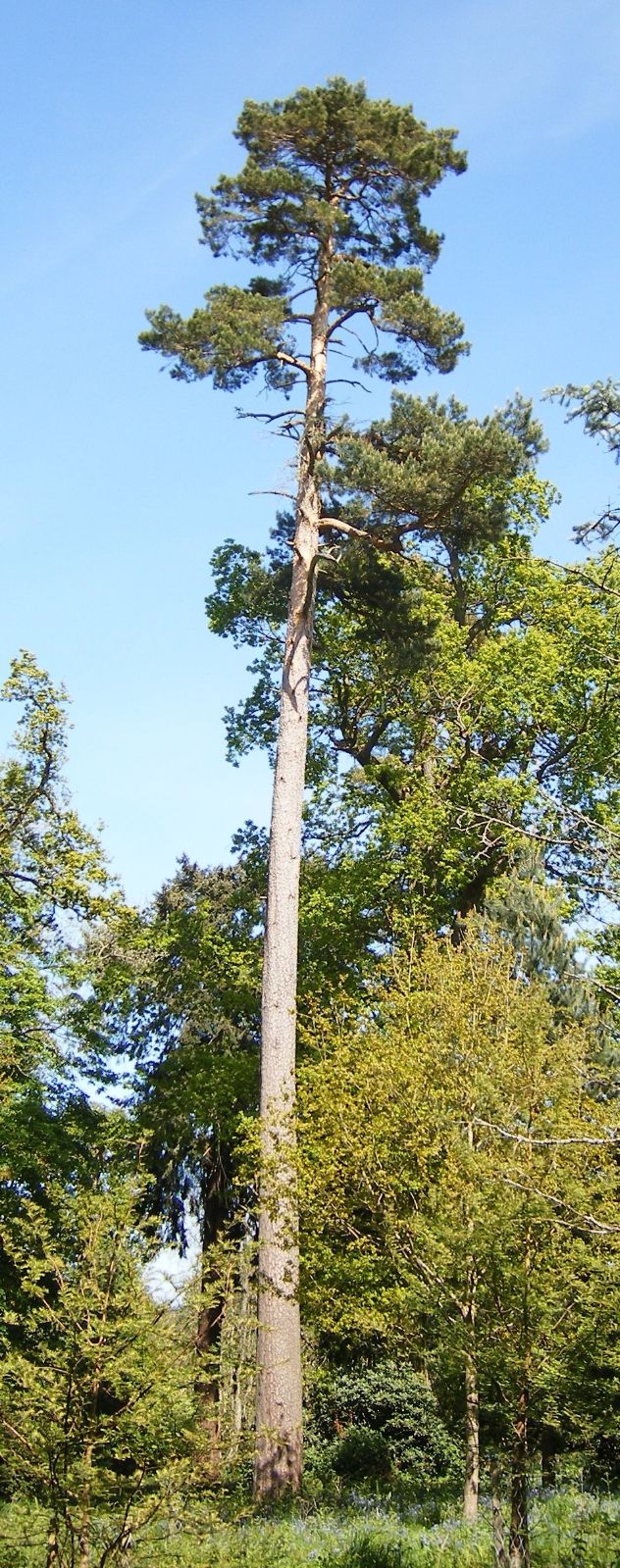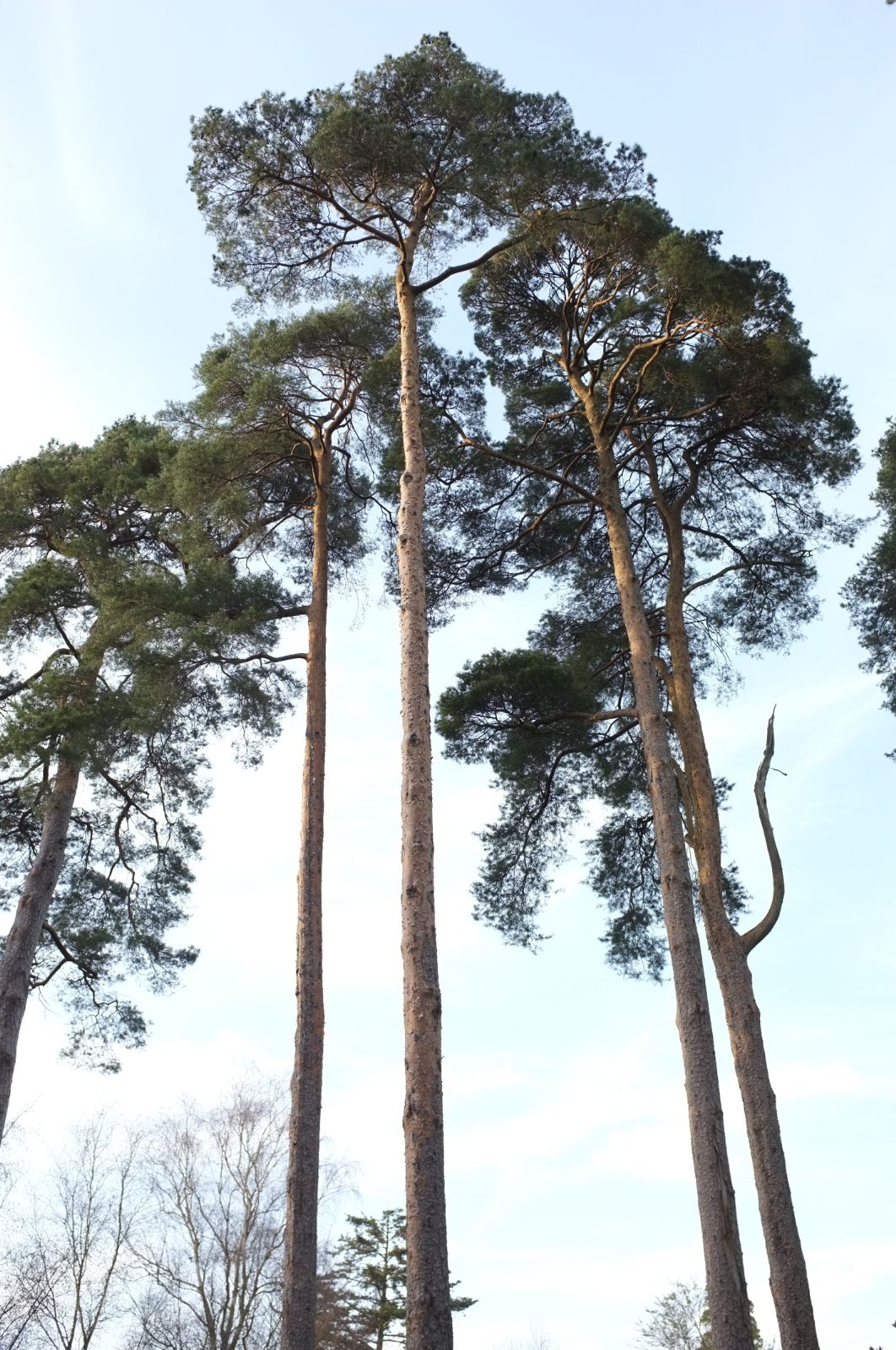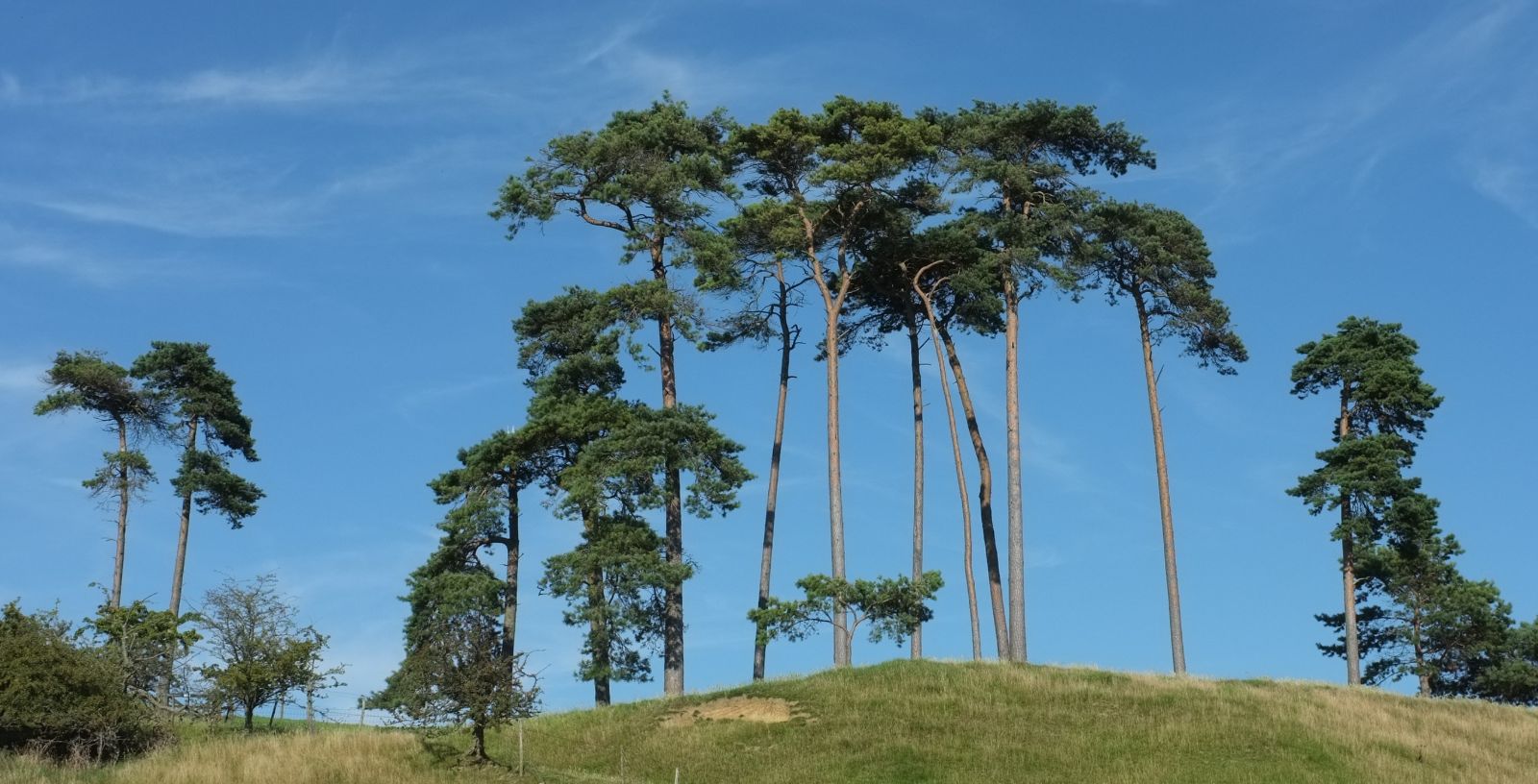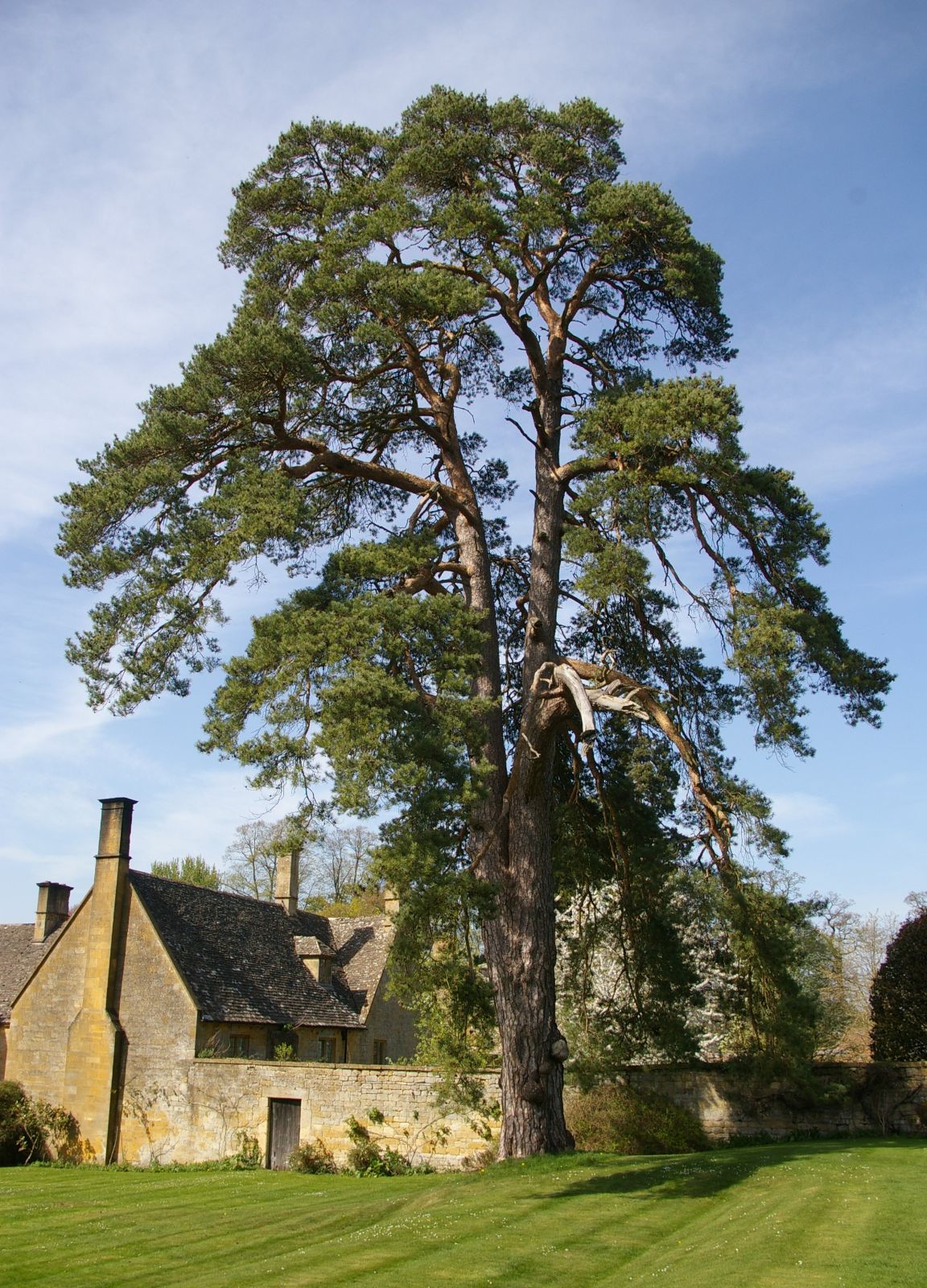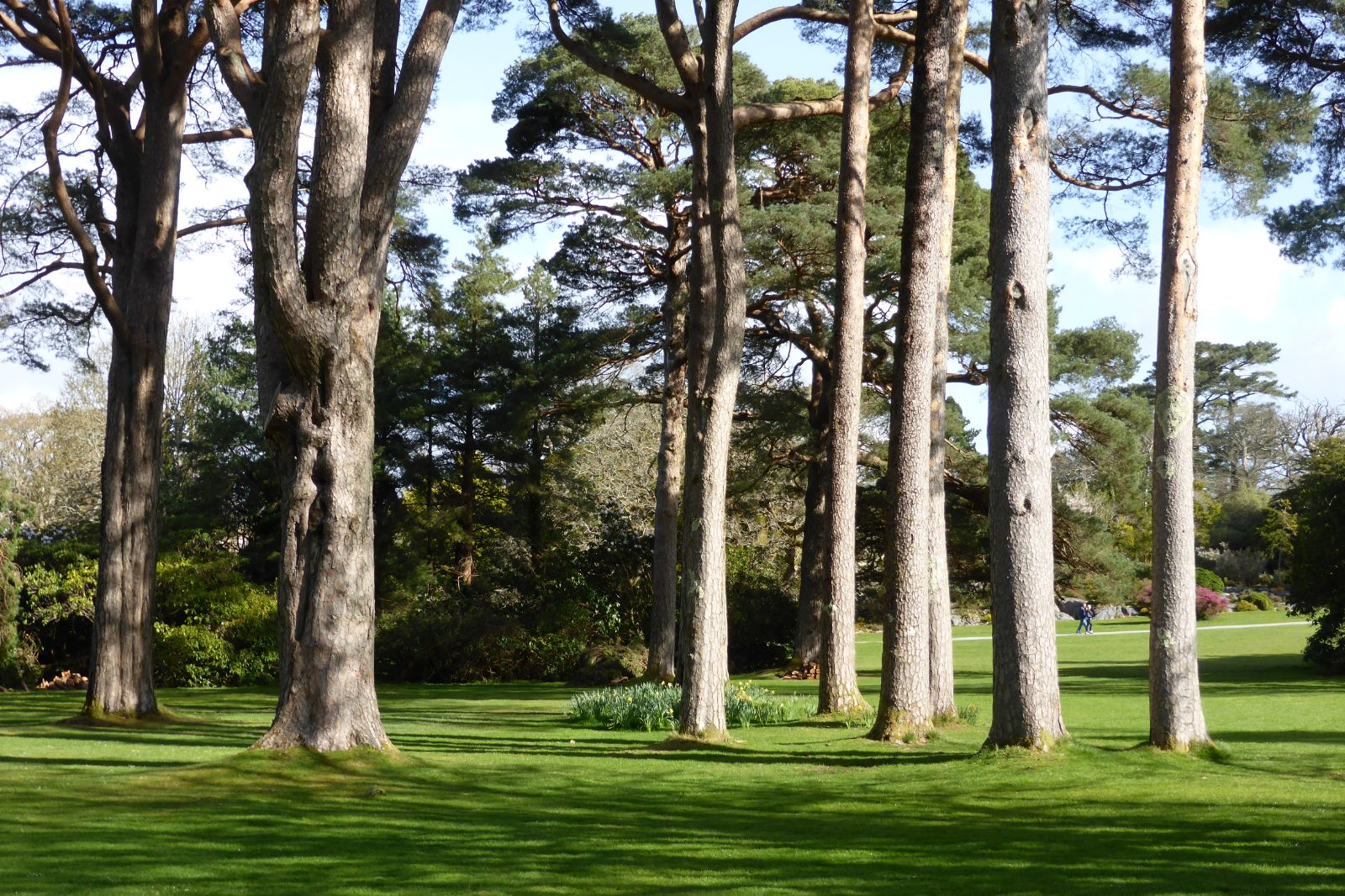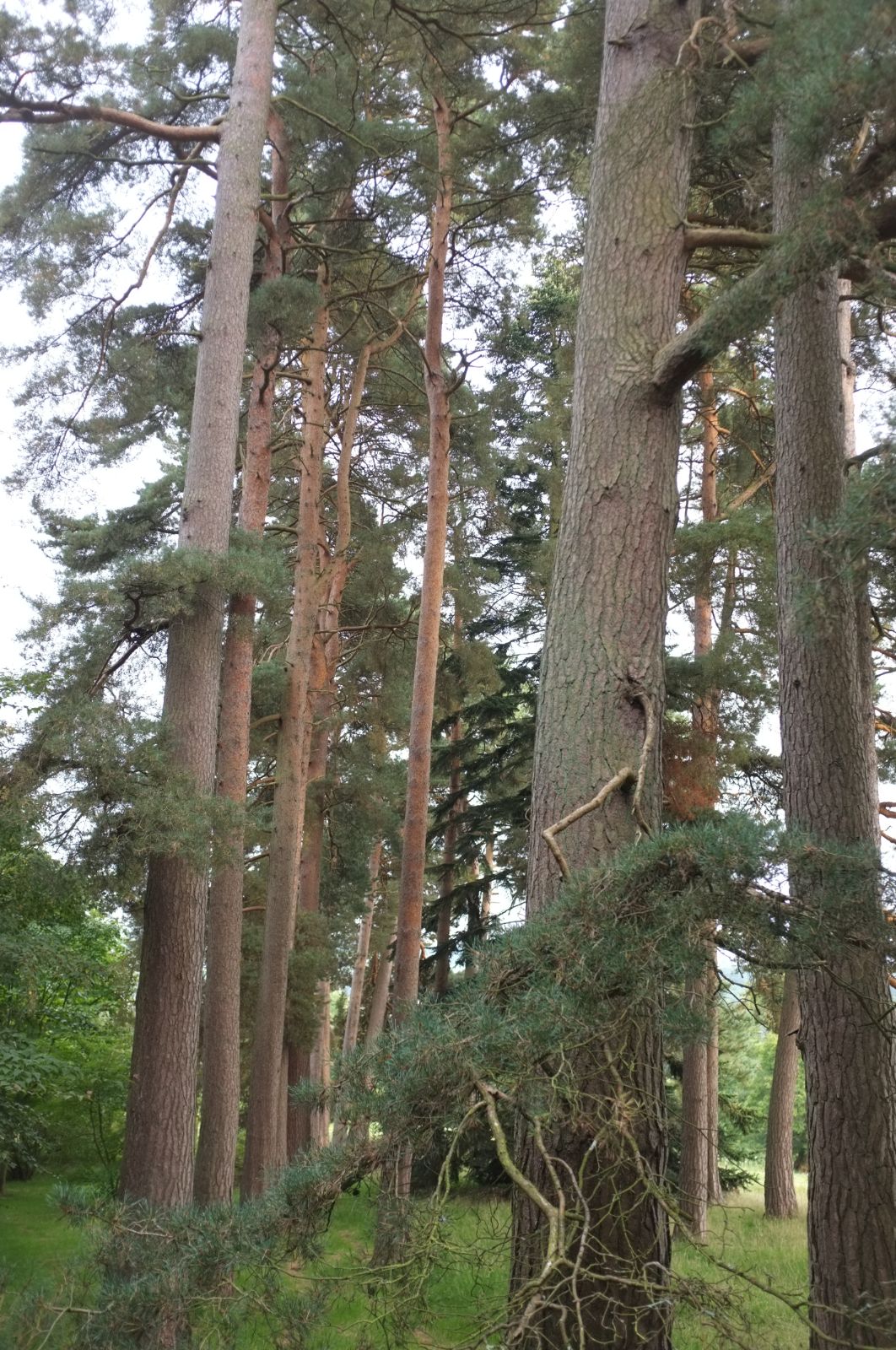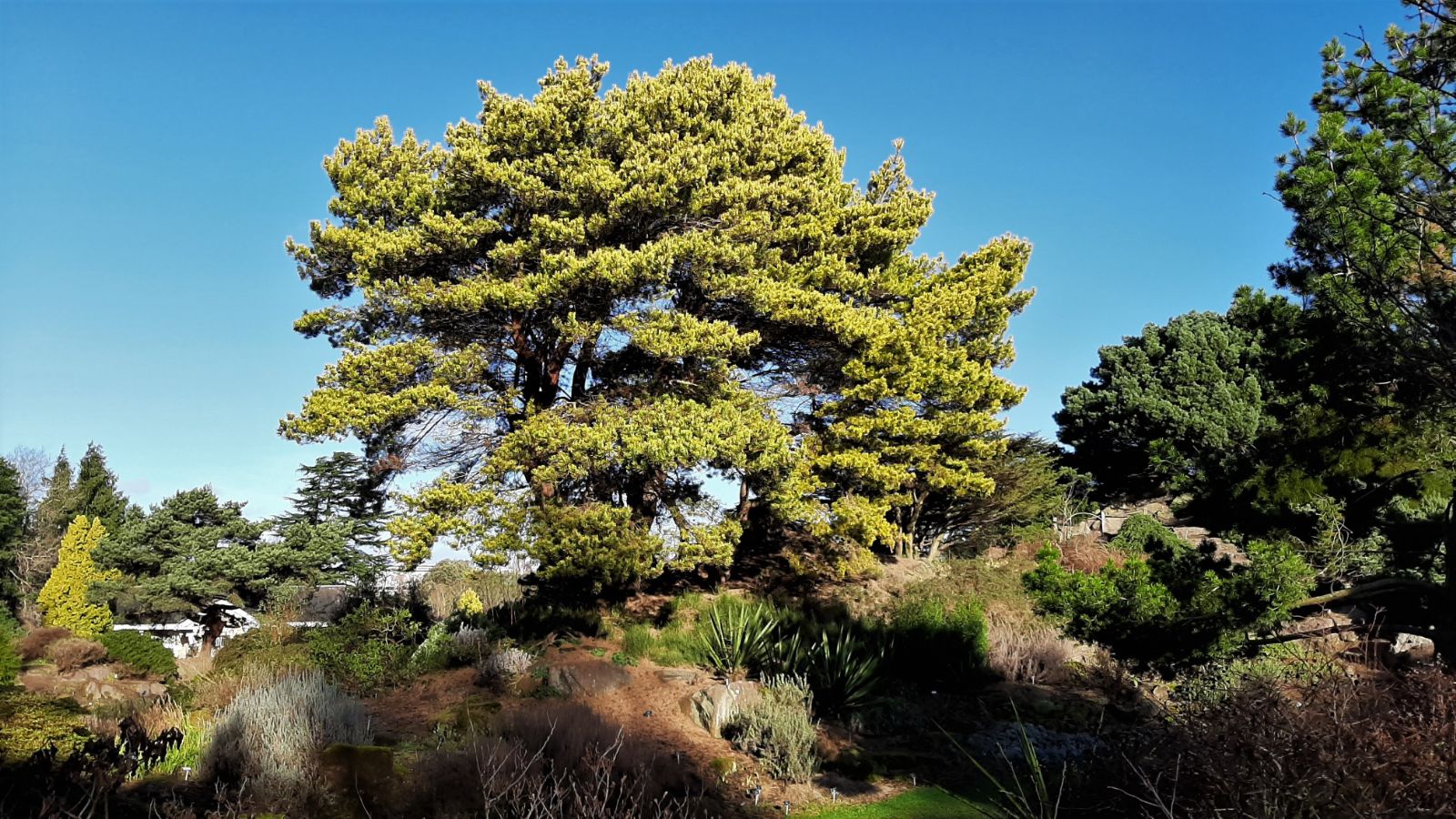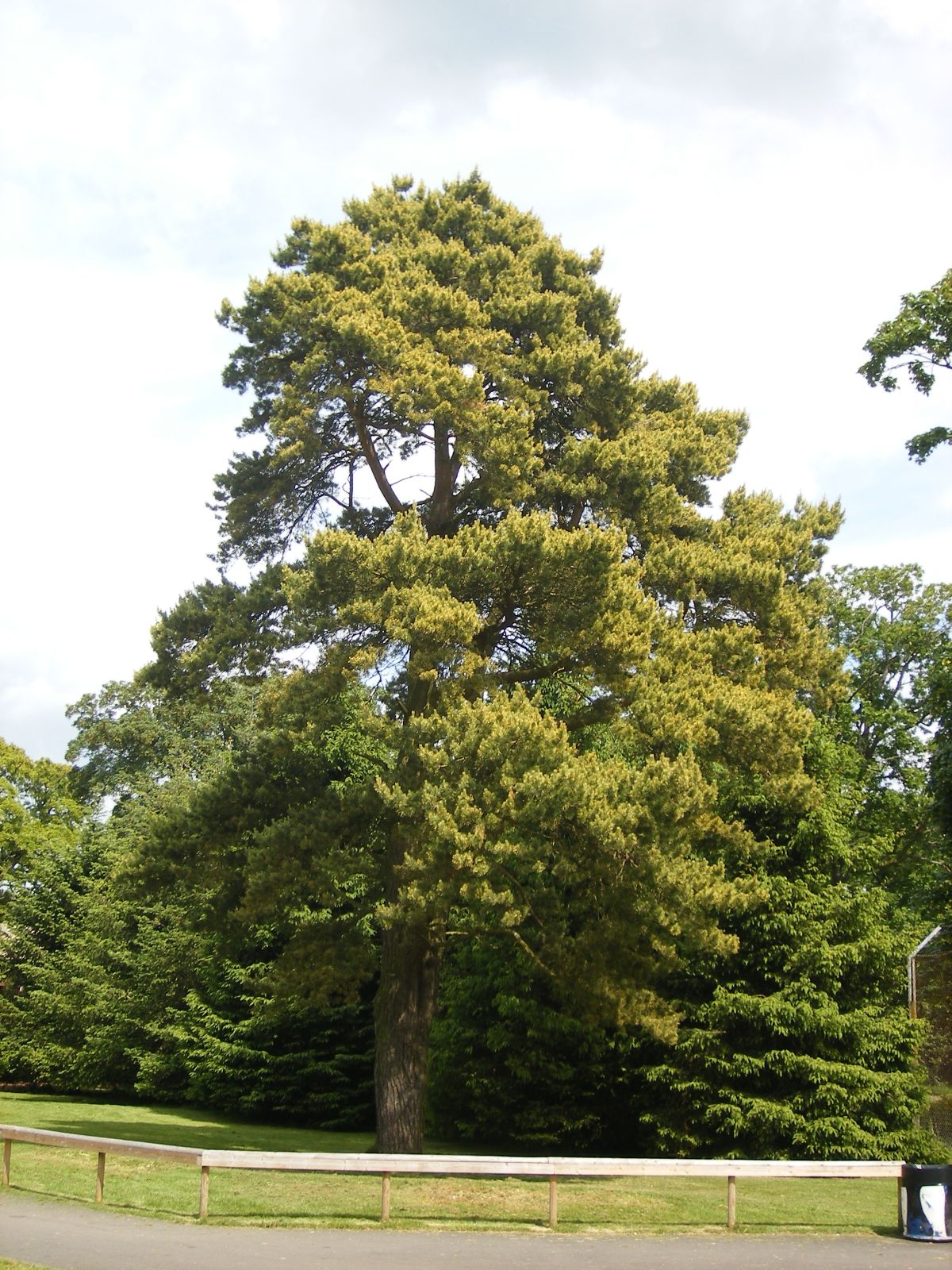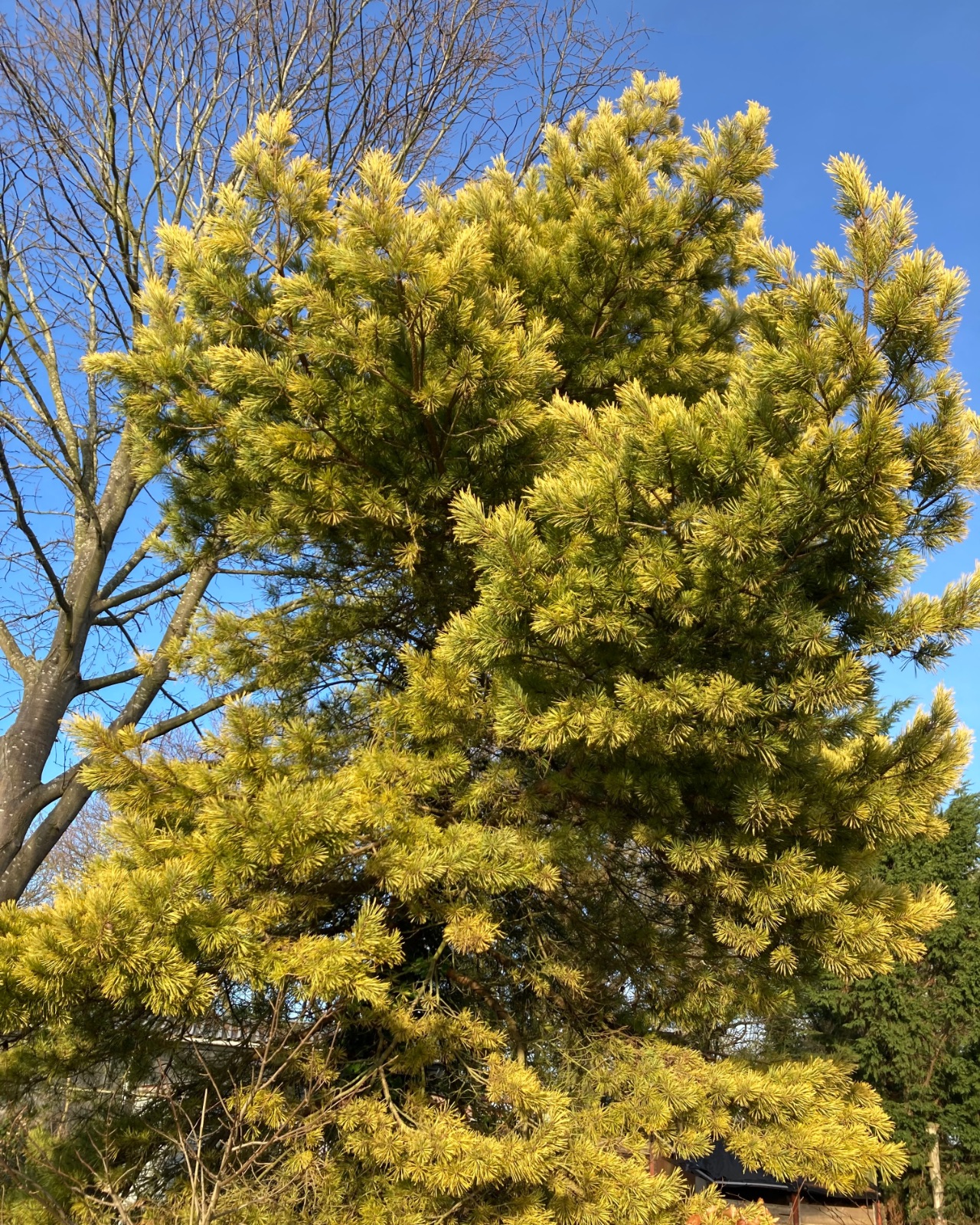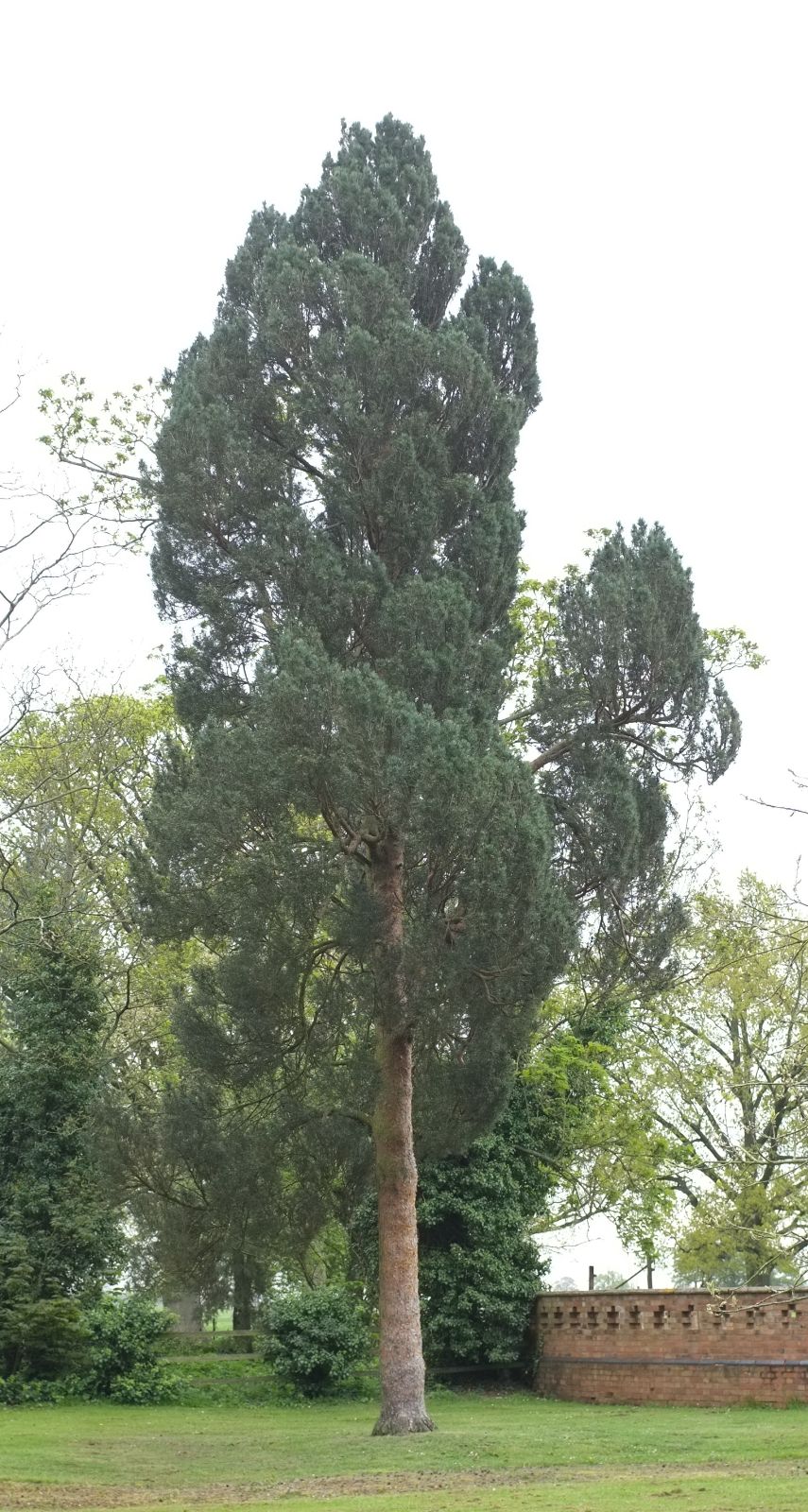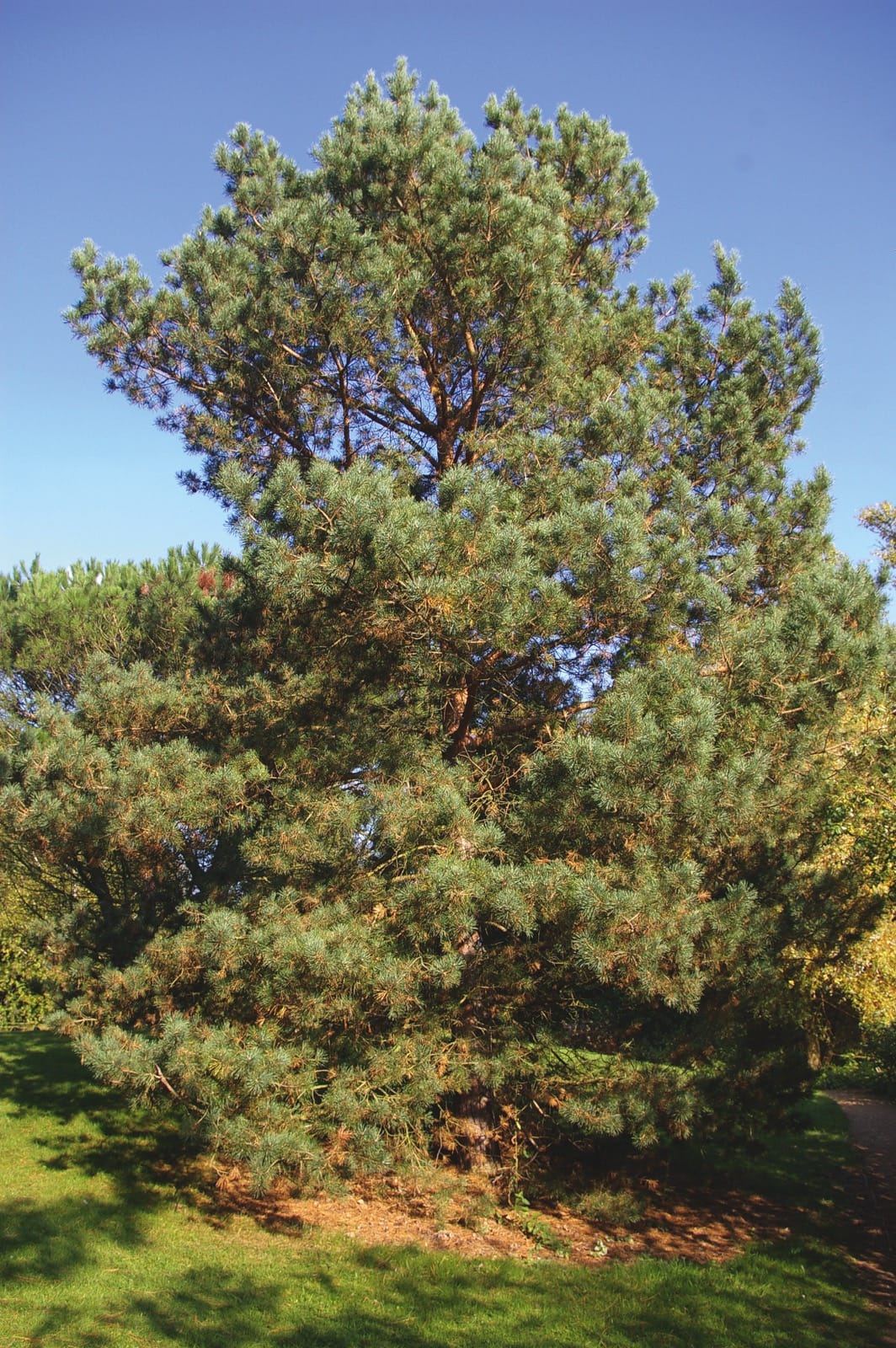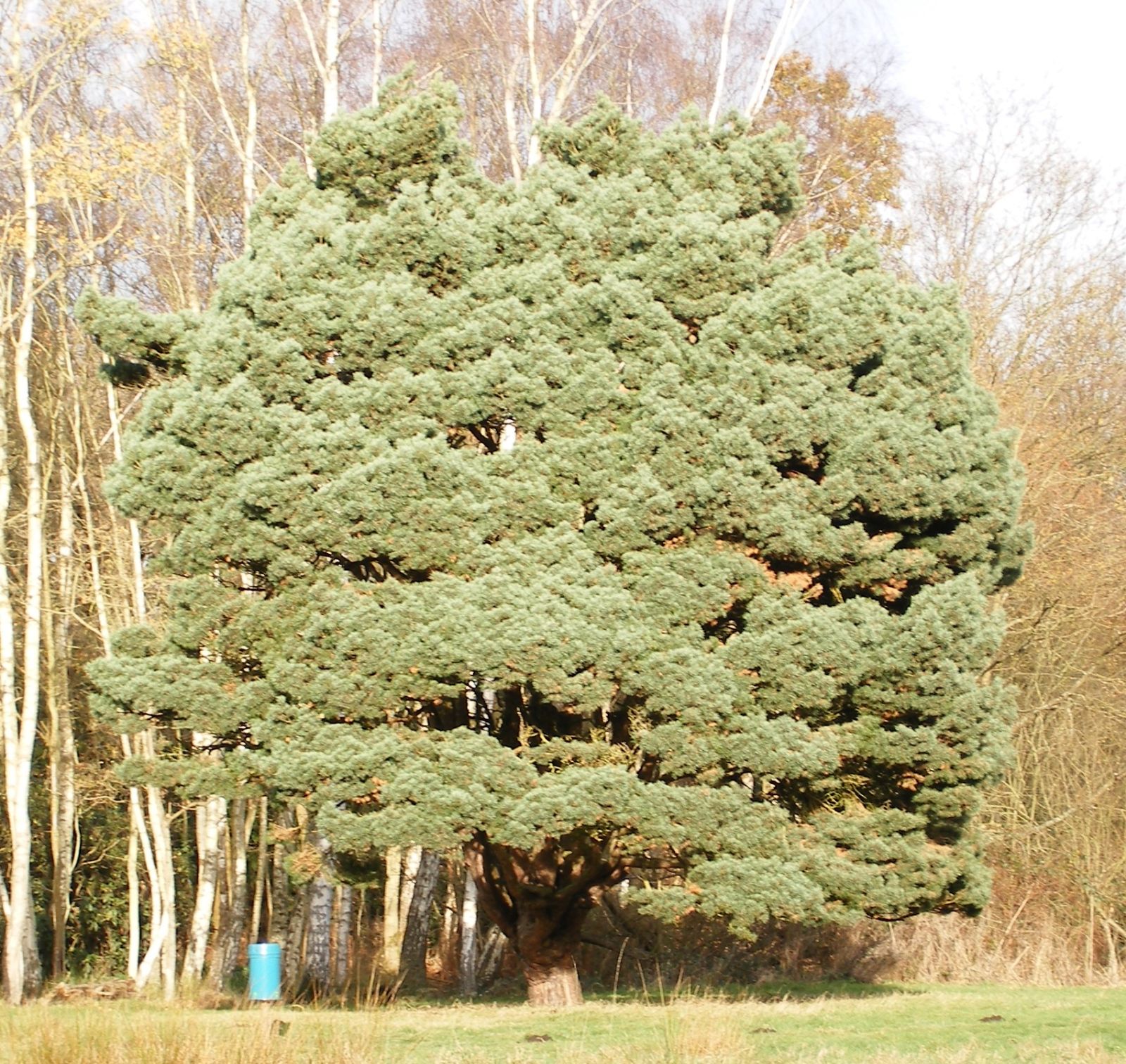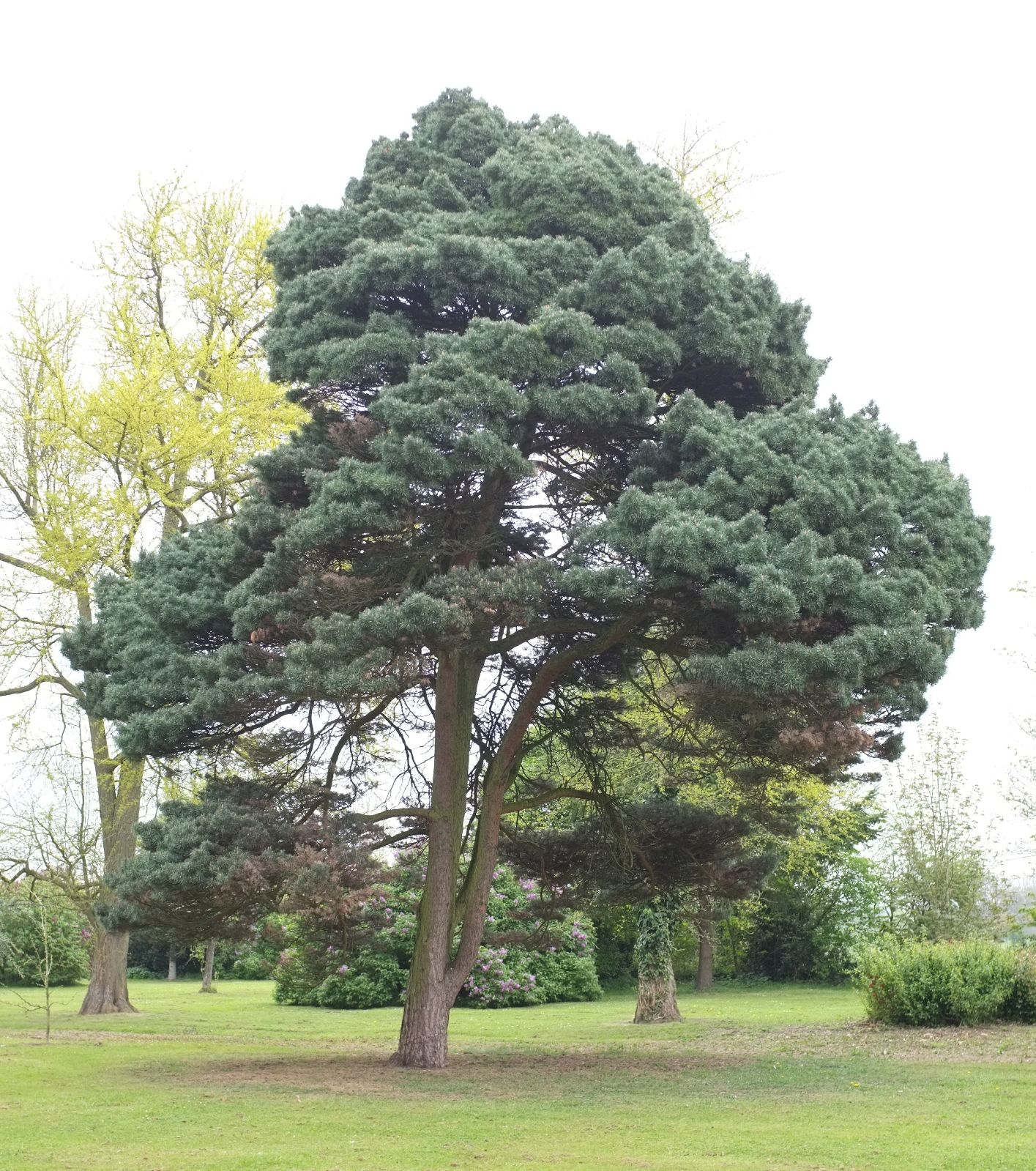Pinus sylvestris
Credits
Article from Bean's Trees and Shrubs Hardy in the British Isles
Article from New Trees by John Grimshaw & Ross Bayton
Recommended citation
'Pinus sylvestris' from the website Trees and Shrubs Online (treesandshrubsonline.
Infraspecifics
Other taxa in genus
- Pinus albicaulis
- Pinus arizonica
- Pinus armandii
- Pinus attenuata
- Pinus ayacahuite
- Pinus balfouriana
- Pinus banksiana
- Pinus bhutanica
- Pinus brutia
- Pinus bungeana
- Pinus canariensis
- Pinus cembra
- Pinus cembroides
- Pinus chiapensis
- Pinus contorta
- Pinus coulteri
- Pinus culminicola
- Pinus densata
- Pinus densiflora
- Pinus devoniana
- Pinus durangensis
- Pinus echinata
- Pinus edulis
- Pinus elliottii
- Pinus engelmannii
- Pinus eremitana
- Pinus flexilis
- Pinus gerardiana
- Pinus greggii
- Pinus × hakkodensis
- Pinus halepensis
- Pinus hartwegii
- Pinus heldreichii
- Pinus henryi
- Pinus × holfordiana
- Pinus hwangshanensis
- Pinus jeffreyi
- Pinus johannis
- Pinus koraiensis
- Pinus lambertiana
- Pinus leiophylla
- Pinus longaeva
- Pinus massoniana
- Pinus maximartinezii
- Pinus monophylla
- Pinus montezumae
- Pinus monticola
- Pinus morrisonicola
- Pinus mugo
- Pinus muricata
- Pinus nelsonii
- Pinus nigra
- Pinus oocarpa
- Pinus orizabensis
- Pinus palustris
- Pinus parviflora
- Pinus patula
- Pinus peuce
- Pinus pinaster
- Pinus pinceana
- Pinus pinea
- Pinus ponderosa
- Pinus pseudostrobus
- Pinus pumila
- Pinus pungens
- Pinus quadrifolia
- Pinus radiata
- Pinus remota
- Pinus resinosa
- Pinus rigida
- Pinus roxburghii
- Pinus sabiniana
- Pinus serotina
- Pinus sibirica
- Pinus strobiformis
- Pinus strobus
- Pinus tabuliformis
- Pinus taeda
- Pinus taiwanensis
- Pinus teocote
- Pinus thunbergii
- Pinus torreyana
- Pinus virginiana
- Pinus wallichiana
- Pinus wangii
- Pinus yunnanensis
A tree rarely more than 100 to 120 ft in height, with a trunk 3 ft, sometimes 5 ft in thickness. Its crown varies in shape according to the density of the stand, the age of the trees, and the race to which they belong. The bark usually has a reddish tinge, especially in the crown, where it is thin and flaky; on the trunk it may be cracked into large, fairly smooth plates; or ridged, with anastomosing furrows; or with small, loose, concave plates. Young stems glabrous, green; buds short-pointed, brown, usually more or less resinous. Leaves in pairs, grey-green, varying in length from 11⁄2 to 4 in. according to the vigour of the tree and the race to which it belongs; leaf-sheath 1⁄4 to 3⁄8 in. long, persistent. Cones conical to ovoid, usually in some shade of brown, 1 to 21⁄2 in. long; scales rhomboidal at the apex, transversely keeled, flattish or sometimes raised, especially on the outward-facing side. Seeds winged, shed in spring.
P. sylvestris has its main distribution in northern Eurasia, from Scotland through Scandinavia and the Baltic region to the Russian Far East, and in its north-south range from beyond the Arctic Circle to the borders of the steppe. In Central and Western Europe it was widespread in some phases of the postglacial epoch, but it is now confined to areas and habitats where for one reason or another it can withstand the competition of deciduous forests or of the common spruce. It is not now a native of the British Isles outside Scotland, though it was still to be found in northern England a few centuries ago, and some authorites hold that the Scots pine of the heathlands of southern England may descend partly from trees which have persisted there since earlier post-glacial times. North of the Mediterranean and in the Near East it ranges from Spain and the Pyrenees to the Caucasus, but its distribution is patchy and it is quite absent from peninsular Italy.
For gardens there is scarcely any tree more picturesque than an old Scots pine, or with greater beauty of trunk, especially when lit by the low rays of the winter sun. The poet Wordsworth preferred the Highland pine of Scotland ‘to all other trees except the Oak, taking into consideration its beauty in winter, and by moonlight, and in the evening’ (Letter to the nurseryman James Grigor written from Rydall Mount, December 7, 1844).
Some notable specimens of Scots pine are: Kilkerran, Ayrs., pl. 1757, 102 × 131⁄4 ft (1970); Keir House, Perths., pl. 1827, 93 × 113⁄4 ft (1970); Kidbrooke Park, Sussex, 105 × 71⁄2 ft, with clear bole of 65 ft (1968); Compton Chamberlayne, Wilts, 88 × 141⁄4 ft (1960); Forde Abbey, Dorset, 60 × 133⁄4 ft (1959); Oakley Park, Shrops., 113 × 101⁄2 ft (1971); Hewell Grange, Worcs., 105 × 101⁄4 ft (1963); Tetton House, Som., 82 × 111⁄4 ft (1959).
The Scots pine provides one of the most important and widely used of timbers. Much of it is imported from N. Europe as yellow deal or redwood, and in earlier times as Riga fir, Danzig fir, etc., according to the port from which it was shipped. In this country the Scots pine is still an important plantation tree, despite the competition from faster-growing species such as Corsican pine and P. contorta. It is particularly suited to poor soils in the eastern parts of the country, where the climate is drier and the summers warmer than average. Planting by the Forestry Commission is at the rate of 2,000 acres annually, and the total area devoted to it in 1965 was 623,000 acres.
P. sylvestris is a very variable species, as might be expected, considering the diversity of the climates, soils, and altitudes in which it occurs. Many local varieties have been distinguished, but the characters of the wild trees may be to a large extent determined by the local environment, and are lost or modified when the variety is grown away from its native habitat. A few of the local races are mentioned below, together with the more important garden varieties:
From the Supplement (Vol. V)
specimens: Mountfield Court, near Hastings, Sussex, 82 × 143⁄4 ft (1983); Honey-hanger, near Haslemere, Surrey, 104 × 83⁄4 ft (1980); Oakley Park, Shrops., 113 × 101⁄2 ft (1971) and another 118 × 9 ft (1978); Hartrow Manor, Som., 73 × 17 ft (1978); Munches, Kirkc., 95 × 14 ft and 85 × 13 ft (1985); Shambellie Wood, nr Dalbeattie, Kirkc., pl. 1780, 118 × 81⁄4 ft and 92 × 10 ft (1984); Bargany, Ayrs., Lawn, 118 × 141⁄4 ft (1985); Kilkerran, Ayrs., pl. 1757, 102 × 131⁄4 ft (1970); Rossdhu, Dunbart., Garden, 80 × 143⁄4 ft and, Drive, 75 × 141⁄4 ft (1985); Keir House, Perths., pl. 1827, 85 × 121⁄4 ft (1985); Curraghmore, Co. Waterford, Eire, 121 × 133⁄4 ft (1975).
cv. ‘Aurea’ – specimens: Hergest Croft, Heref., 40 × 43⁄4 ft (1985); Smeaton, E. Lothian, Castlewellan, Co. Down.
Two new golden-leaved cultivars of Scots pine are ‘Gold Coin’ and ‘Gold Medal’.
† cv. ‘Doone Valley’. – An upright shrub of irregular habit, found by J. W. Archer and R. S. Corley as a witch’s broom on a tree growing near Frensham Ponds, Surrey. Grafts were raised at Doone Valley, Mr Archer’s house at that time, and the clone distributed commercially by Messrs Hillier (Welch, Man. Dw. Conif., p. 324). It is portrayed in Bull. Alp. Gard. Soc., Vol. 49, p. 133 (1981).
† cv. ‘Lodge Hill’. – Slow-growing and of dense, irregular habit. Put into commerce by Don Hatch, Chantry Nursery, Honiton, Devon.
† cv. ‘Moseri’. – A shrub of rounded habit, to 3 or 4 ft high and wide; needles light green, yellowish in winter. Raised in Moser’s nursery, Versailles, before 1890. There are old specimens in the University Botanic Garden, Cambridge and at Nymans in Sussex.
From New Trees
Pinus sylvestris L.
(Subgen. Pinus, Sect. Pinus)
Scots Pine
This very familiar but magnificent species was described by Bean (B243, S381) and Krüssmann (K238). A large number of intraspecific taxa have been recognised within it, largely due to its huge distribution – the widest in the genus. Most of these were placed in synonymy by Farjon (2001), who recognised only two varieties, var. hamata and var. mongolica. These are grown in some collections and botanical gardens, and a key and brief botanical notes are provided below. For practical horticultural purposes, however, they are insignificantly distinct from any other P. sylvestris, and no horticultural commentary is necessary.
| 1a. | Leaves remain blue-green in winter; apophyses often profoundly hooked; Balkans, Crimea, Caucasus, Turkey | var. hamata |
| 1b. | Leaves fade dull green to yellowish green in winter; apophyses not or only slightly hooked | 2 |
| 2a. | Buds usually extremely resinous; eastern Siberia, Mongolia, northern China | var. mongolica |
| 2b. | Buds usually slightly resinous; Eurasia (from Spain and Scotland to Pacific coast of Siberia) | var. sylvestris |
'Aurea'
Leaves yellowish green at first, becoming golden in winter, eventually green. In commerce in Britain by 1875. Examples are: Westonbirt, Glos., 39 × 3{1/2} ft (1970); Hergest Croft, Heref., 25 × 3{1/2} ft (1963); Smeaton, East Lothian, 43 × 3{1/4} ft (1966); Castlewellan, Co. Down, 47 × 5{1/4} ft (1970). Award of Merit 1964, when shown by Robert Strauss, Stonehurst, Sussex, where there is an example about 32 ft high (1964).
'Beuvronensis'
A dense, very slow-growing bush with blue-green leaves about 1{1/2} in. long. It is believed to have originated as a witch’s broom and was put into commerce by Transon Frères of Orleans, before 1891. According to Hornibrook an old specimen at Wakehurst Place in Sussex was slightly over 3 ft high and about 5 ft wide in 1932.f. fastigiata (Carr.) Beissn
Of narrow habit, with ascending branches. It occurs occasionally in the wild. There is an example 21 ft high in the Royal Horticultural Society Garden, Wisley, Surrey (1968).
var. argentea Steven
Foliage of a distinctly more glaucous or silvery hue. Described from the Caucasus. The f. argentea of Beissner is of general application to trees of this character, which are not confined to the Caucasus and may appear among seedlings.var. engadinensis Heer
A small tree up to about 30 ft; bark thin, reddish; buds resinous. Leaves about 1{1/2} in. long, stiff, persisting five years. Cones brown, glossy; scales hooked at the apex with a thickened umbo surrounded at the base by a dark ring, said to be caused by a fungus. It was described from the Engadine but occurs elsewhere in the central valleys of the Alps and in the Dolomites. It ascends to 6,000 ft. It is thought by some to be a hybrid between P. sylvestris and either P. mugo or P. uncinata. But the var. lapponica Fries, from northern Scandinavia, is very similar and cannot be a hybrid. Coming from a region where the summer days are very long it is said to grow poorly when introduced to more southern latitudes.var. haguenensis Loud.
Common Names
Haguenau Pine
This race, which occurs in Alsace near the Rhine, has no distinctive botanical characters, but is one of the best known provenances of the Scots pine. In France it was widely used in the last century for reafforestation and was also sold in quantity by some nurserymen in this country. In 1838, Lawson and Son of Edinburgh were offering one-year seedlings from Haguenau seed at 2 shillings a thousand.
var. hamata Steven
The leaves of the type variety turn dull green or even yellowish green in winter, but those of var. hamata remain strong blue-green. The apophyses of var. hamata are often hooked, though this character shows much overlap with var. sylvestris. It also differs significantly in resin composition. Mirov 1967, Farjon 2005a. Distribution ALBANIA; ARMENIA; AZERBAIJAN; BULGARIA; GEORGIA; GREECE; RUSSIAN FEDERATION: Caucusus; SERBIA & MONTENEGRO; TURKEY; UKRAINE: Crimea. Habitat Between 500 and 2600 m asl. USDA Hardiness Zone 5. Conservation status Not evaluated. Cross-reference K242.
var. mongolica Litv.
The foliage of var. mongolica is dull and grey-green, with a tendency to become yellowish in winter. The buds are usually very resinous (though in some specimens of var. mongolica the buds are less resinous, while in some specimens of var. sylvestris they are very resinous). Fu et al. 1999c, Farjon 2005a. Distribution CHINA: Nei Mongol (northern Hinggan range); MONGOLIA; RUSSIAN FEDERATION: eastern Siberia, around Lake Baikal. Habitat Dry slopes with sandy soils, between 300 and 2000 m asl. USDA Hardiness Zone 2. Conservation status Not evaluated. Illustration Fu et al. 1999c; NT621.
var. rigensis Loud.
Common Names
Riga Pine
A native of the Baltic region, distinguished by its narrow crown and its tall straight stems, which provided the masts for many warships in the days of sail. It proved to be the finest form of P. sylvestris in the trial plots planted by Ph.-A. de Vilmorin at Les Barres early in the 19th century, but is not generally considered to be of any value outside its native habitat. It is interesting that some of the seed used by de Vilmorin came not from the Baltic but from Brittany, where the Riga pine had been planted in the 18 th century, presumably to supply the naval shipyards with timber.
var. scotica Beissn.
Common Names
Highland Pine
Synonyms
P. scotica Willd. ex Endl.
The native pine of Scotland once formed extensive forests, now reduced to a few remnants. The best known of the surviving natural stands are on Loch Maree; around Loch Morlich in the Glenmore forest; and the Black Wood on the south side of Loch Rannoch. The distinctive characters of the Highland pine are said to be the grey-green to glaucous, shorter-than-average leaves and the tendency of the cone-scales to become pyramidal in the upper part of the cone, but it is doubtful whether it would be possible to identify a Highland pine with any certainty when it is grown outside its native habitat. It is sometimes erroneously stated that Philip Miller gave the Highland pine botanical status as P. rubra. This name, as is clear from his account, was given to the species as a whole.The standard work on the Highland pine is: H. M. Steven and A. Carlisle, The Native Pinewoods of Scotland (1959).
'Watereri' ('Pumila')
A slow-growing, but not dwarf, variety of dense habit, with glaucous leaves about 1{1/2} in. long. It was put into commerce by the Knap Hill Nursery, near Woking, Surrey, under the name P. sylvestris pumila or the Dwarf Scotch, and first appeared in their advertisements in 1855. The original plant is believed to have been found on Horsell Common, some two miles from the nursery, by Anthony Waterer, who was joint owner of the firm at that time. Later in the century it was propagated by the Dutch nurseries and, until recently, was more appreciated in Holland and Germany than in the land of its origin. It was known on the Continent by the epithet watereri or waterana, and the former is now accepted as the correct cultivar name, despite the fact that ‘Pumila’ has priority. The original plant, beautifully situated and in perfect health, still grows in the Knap Hill Nursery, and is about 25 ft high and as much in width.

